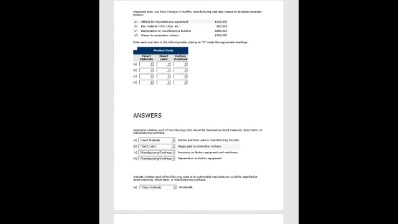
Those transactions could result in your sanity going right out the window—along with your ability to file an accurate tax return. To begin, you need to ensure that the undeposited funds account is enabled in QuickBooks. To do this, go to “Edit” in the menu, select “Preferences” and then choose “Payments”, which is found in the sub-menu on the left side of the screen. You have many accounting software options when it comes to keeping track of your how to calculate sales volume variance business’s financial accounts. Many people enjoy using QuickBooks because it’s easy to use, has robust features, and can grow with their company. First, reconcile your bank accounts to make sure you have recorded all the deposits you have made.
If we have to get technical when you create an invoice you are crediting an income account (through the invoice charges) and debiting accounts receivable. When that bulk deposit drops into your QBO bank feed, it is your responsibility to match the portion of the money to the right client’s outstanding payment due. To confuse matters more, some payment methods, like ACH or credit card, may have already subtracted a fee from the how to find accounting errors gross sum collected on behalf of the processor.
Choose your customer from the drop-down menu and their open invoice will automatically show up on the list. Choose your payment method and verify the amount received. For example, let’s say Willie’s Widgets paid you $300, Wally’s Whatsits paid you $750 and Whitley’s Whosits paid you $200.
Sometimes funds are “in transit” for less than a day, as when a customer pays you with cash or a check and you take the money to your bank at the end of the day. Other times, funds might be in transit for several days. QuickBooks is without doubt one of the most popular accounting and bookkeeping software systems today.
You’ll find Undeposited Funds on your Balance Sheet under Other Current Assets. In simple terms, this is money that your organization has received from customers but has not yet been deposited into your bank account. When you use the Make Deposits form, your bank account will be credited with the Undeposited Funds.
Steps to Fix Undeposited Funds in QuickBooks through Dummy Account
You can reconcile your undeposited funds in QuickBooks in a number of ways. Enjoy flawless accounting and bookkeeping with the best QuickBooks integration. When business is thriving, bookkeeping has a way of sneaking up on you. For many QuickBooks do-it-yourselfers, it’s possible to “get by” and decode the mysterious language of accounting-ese in the tool.
Accounting Enigmas: Undeposited Funds Account

So, you need to combine your five separate CA $100 records in QuickBooks to match what your bank shows as one CA $500 deposit. We once worked with a law office that was doing about $5 million in annual revenue, with a client set up on a retainer fee of $850,000. That $850,000 retainer was marked in the books both against the retainer and against undeposited funds. The result was that the undeposited funds made its way onto the balance sheet as a part of their cash assets. Tax time came along, and because of a bookkeeping error, the total revenue of the business was inflated by $850,000! Therefore, this simple error required the business to pay taxes on $850,000 of additional income that had never been received.
Download Your FREE QuickBooks Reference Guide
- Well, get ready to learn something new and take a thorough look at Undeposited Funds.
- So be sure to double-check that you properly complete the bank reconciliation to clear the balance.
- An undeposited fund is an account that is a component of the QuickBooks Online Chart of Accounts.
- As you can see in the image above, QuickBooks Online instructs you to use the Cash On Hand account instead of the Undeposited Funds account for petty cash.
When you put every dollar you get against every dollar you spend, it’s easy to keep track of your activities and figure out what to do if something goes wrong. Even though accounting is not a new idea, the most recent version of it can be hard to understand. As a result of this, there are a lot of instances where mistakes can take place.
How to use QuickBooks Online’s Undeposited Funds account
Let’s say your customer sent you a check for services rendered. You received the check on the last day of the year, which happened to be a Saturday. Every QuickBooks Online file has an Undeposited Funds account. This account is created automatically as part of your business’s chart of accounts and cannot be deleted. If you try to do so, QuickBooks Online will just create a new 36 synonyms of auditing Undeposited Funds account for you. QuickBooks Online has a special account specifically for these funds in transit.
And the most common mistake that people make while using this software is that they allow undeposited funds in QuickBooks to pile up. When you deposit money in your bank account, you often put money in the bank from multiple payments in one single deposit. For example, let’s say you put five $100 checks from five different customers into your checking account. Your bank adds up all five checks and counts them as one deposit of $500. You need to combine the five different $100 entries in QuickBooks into one $500 deposit, which is exactly what your bank shows.